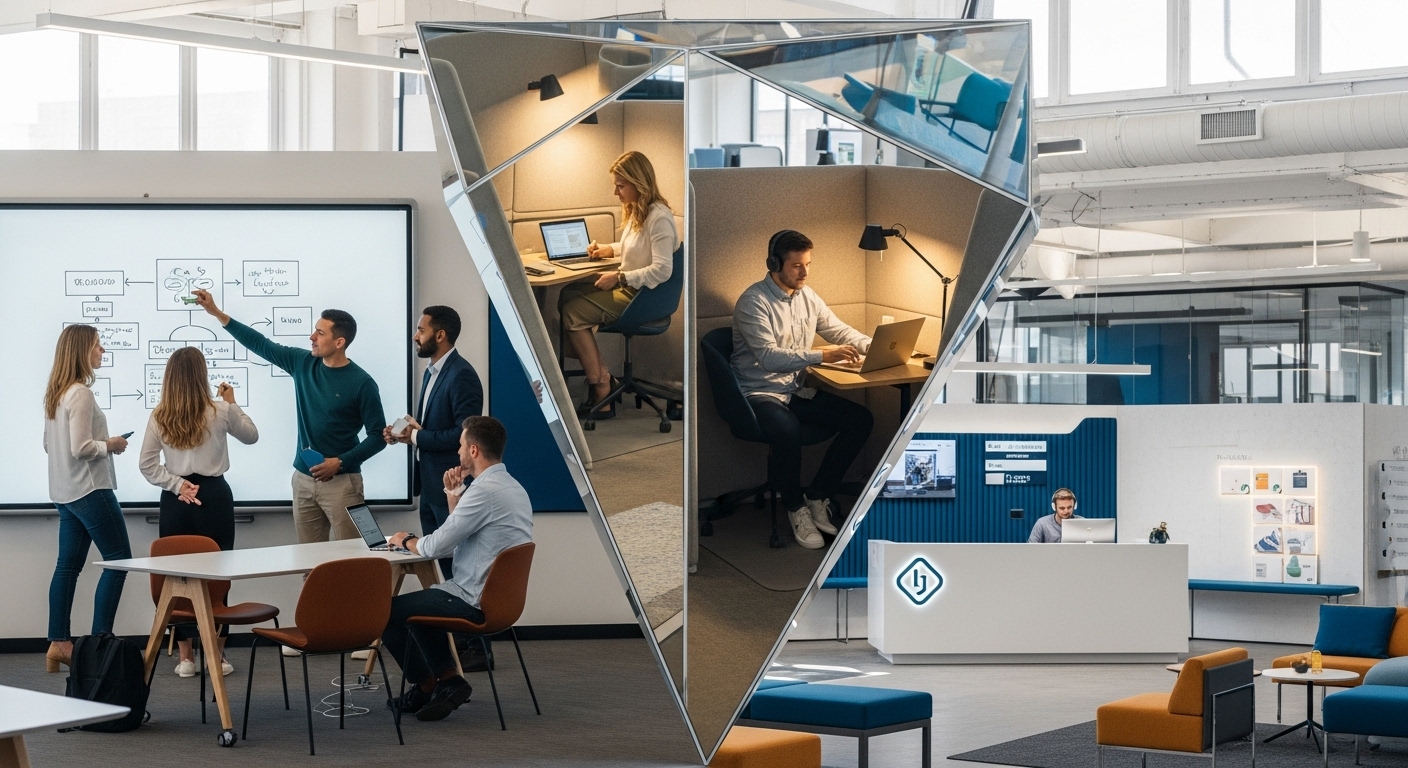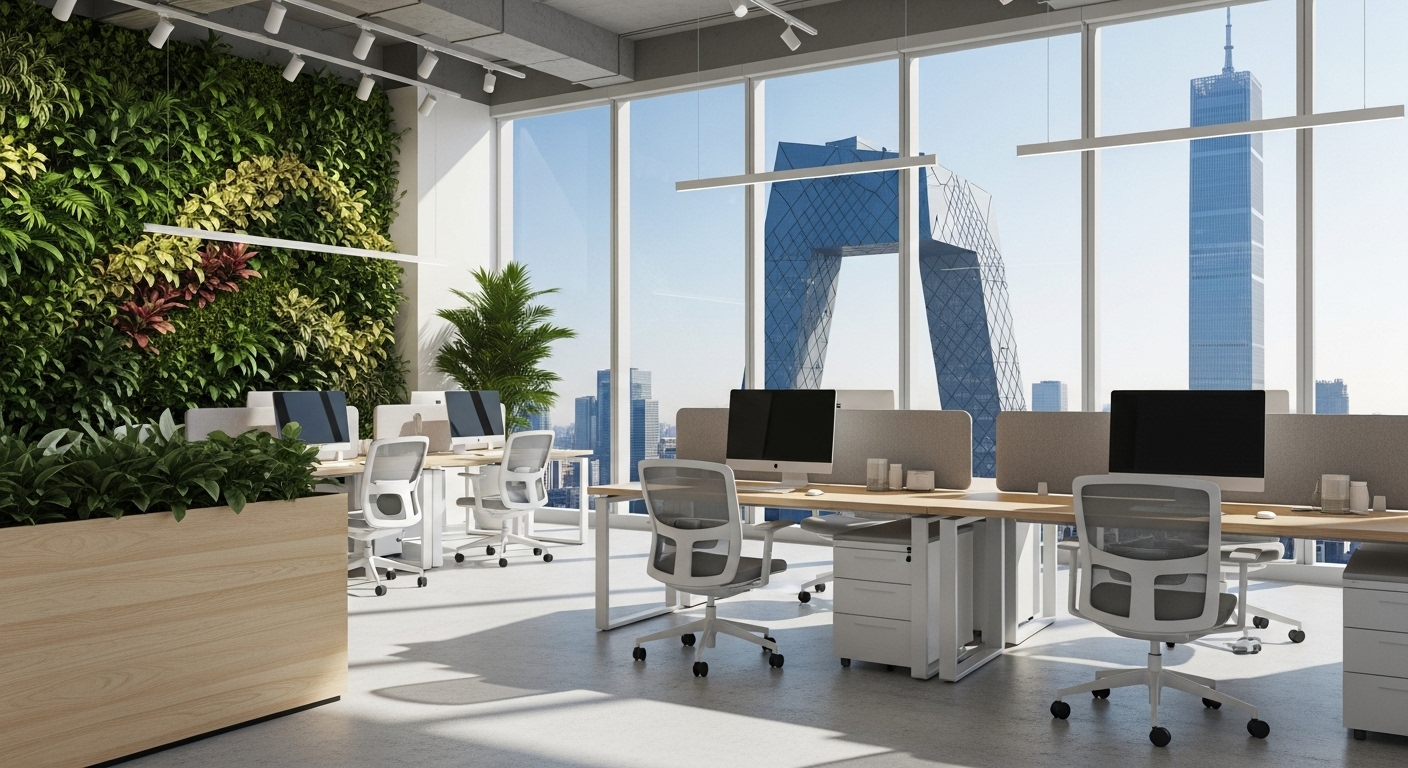In the evolving landscape of work, the office is no longer just a place to house employees. It’s a strategic tool, a cultural hub, and a critical component of your business’s operational engine. Yet, many leaders still approach choosing a workspace with an outdated checklist of square footage and cost per foot. This often leads to a physical environment that creates friction, hinders collaboration, and actively works against the company’s core objectives. The result is a space that feels disconnected from the very work it’s meant to support. To truly thrive, businesses must move beyond the floor plan and adopt a more holistic perspective. This requires a new model for decision-making—one that views the workspace through multiple strategic lenses. Introducing the Purpose-Built Prism: a framework designed to help you analyze and select a space that doesn’t just contain your business but actively accelerates it. This guide will walk you through the critical facets of the prism—Culture, Workflow, Growth, Brand, Finance, and Technology—to ensure your next workspace is a powerful catalyst for success.
The Cultural Compass: Does Your Space Reflect Your Ethos?
Before you ever look at a potential listing, you must first look inward. Your company culture is the invisible force that guides behavior, and your physical workspace is its most tangible expression. A misaligned space can create dissonance, undermining the very values you claim to uphold. For instance, a company that champions open communication and flat hierarchies will struggle in an office filled with siloed private offices. Conversely, a team that requires deep, uninterrupted focus will find an entirely open-plan layout to be a daily source of frustration and lost productivity. Use your culture as a compass. If your ethos is built on high-energy collaboration, look for spaces with dynamic common areas, integrated technology for brainstorming, and flexible furniture that can be easily reconfigured. If well-being is a core value, prioritize locations with natural light, access to green space, and amenities that support mental and physical health. The workspace should be a physical manifestation of your employer value proposition. Zappos, for example, famously designed their Las Vegas headquarters to maximize chance encounters, believing it would foster creativity and a stronger community, a direct reflection of their unique culture. Ask yourself critical questions: Does this layout encourage the behaviors we want to see? Do the amenities reflect what we value? Your office sends a powerful message to your team every single day; ensure it’s the right one.
Mapping the Workflow: Designing for How Work Actually Gets Done
A beautiful office is useless if it impedes the natural flow of work. A truly effective workspace is designed around the specific processes and tasks your teams perform daily. This is the principle of activity-based working (ABW), where employees can choose from a variety of settings depending on the task at hand. Instead of assigning a permanent desk to every individual, you provide a palette of options: quiet pods for focused coding or writing, collaborative zones with whiteboards for team sprints, informal lounge areas for casual check-ins, and private rooms for sensitive calls. To map your workflow effectively, you must first analyze it. Observe how your teams interact. Do engineering and product teams need to be in close proximity for rapid iteration? Does your sales team require a high-energy environment with easy access to call rooms? Does your finance department need a more secure, sequestered area? For example, a software company implementing agile methodologies might design its space around ‘squad pods’—dedicated zones for each team that include desks, a project wall, and a small meeting area. This co-location minimizes friction and speeds up communication cycles. Don’t let a generic floor plan dictate your operations. Instead, let your operational needs dictate the ideal layout. A workspace designed around your true workflow becomes a frictionless environment, boosting efficiency and reducing the small, daily frustrations that can accumulate and harm morale.
The Growth Trajectory: Building for Tomorrow, Not Just Today
One of the most common and costly mistakes in choosing a workspace is planning only for your current needs. A space that feels perfect on day one can become a straitjacket within a year if your company is on a high-growth trajectory. Selecting a workspace requires foresight and a deep understanding of your strategic roadmap. This isn’t just about headcount; it’s about evolving business needs. Will you be launching new product lines that require different team structures? Are you planning to enter new markets that might necessitate a more prominent client-facing area? Scalability and flexibility are your two most important considerations. Look for lease terms that offer options to expand or contract. Can you take on an adjacent suite or an additional floor in the same building? Does the landlord offer flexible terms that won’t penalize you for growth? Workspace providers like WeWork or Industrious have built their models on this very need, offering the ability to scale your office footprint up or down with relative ease. The physical layout should also be considered through a growth lens. Can the space be easily reconfigured? Modular walls, movable furniture, and a robust, well-distributed power and data infrastructure can save you from a costly and disruptive renovation down the line. Choosing a space is a long-term investment. By aligning your decision with your projected growth, you ensure that your office can evolve with you, supporting your ambitions rather than constraining them.
The Brand Beacon: Transforming Four Walls into a Statement
Your workspace is more than a container for your operations; it’s a powerful piece of brand communication. For clients, partners, and prospective employees, the office is often the first and most immersive experience they will have with your company. It’s a three-dimensional story that can convey your mission, values, and level of success far more effectively than a slide deck. A well-designed, on-brand space builds credibility and reinforces your identity in the market. Think about how you want visitors to feel when they walk through the door. Should the atmosphere be one of sleek, modern innovation, or warm, creative energy? The design choices—from the color palette and materials to the furniture and artwork—should all be deliberate. A luxury brand’s office should exude sophistication and quality, while a tech startup’s space might prioritize transparency, fun, and a touch of rebellious creativity. This extends beyond aesthetics. The way you integrate your brand into the functionality of the space matters. Custom signage, branded meeting room names that reflect company values, and displays showcasing your products or achievements all contribute to a cohesive brand story. For potential hires, the workspace is a critical factor in their decision-making. It offers a glimpse into the daily life and culture of the company, serving as a powerful tool for talent attraction. When your physical environment authentically reflects your brand, it becomes a beacon, attracting the right clients, partners, and talent who resonate with who you are and what you stand for.
The Financial Fulcrum: Balancing Cost with Strategic Value
While financial prudence is essential, focusing solely on the monthly rent is a dangerously narrow view of workspace economics. A truly strategic financial analysis considers the Total Cost of Occupancy (TCO) and, more importantly, the return on that investment. The cheapest option is rarely the best value. The financial fulcrum is about balancing upfront and recurring costs with the tangible and intangible benefits the space provides. TCO includes not just rent, but also utilities, maintenance, insurance, security, technology infrastructure, and potential build-out or renovation costs. A space with a lower base rent might have outdated systems that lead to higher utility bills or require a significant capital investment to become functional. Beyond these direct costs, consider the strategic value. How does the location impact your team’s commute time and satisfaction? A slightly more expensive office that is easily accessible by public transport may significantly improve employee retention, saving you far more in recruitment and training costs over the long term. How does the layout impact productivity? Research from firms like Leesman consistently shows a direct link between workplace effectiveness and employee engagement and productivity. If a better-designed space boosts your team’s output by even a few percentage points, the ROI can be massive.
As a Gensler research report noted, “For most businesses, payroll costs are their largest expense, often 10 times that of their rent. This means even a single-digit improvement in productivity can have a greater impact on the bottom line than negotiating a significant rent reduction.”
This reframes the conversation from ‘What can we afford?’ to ‘What is the right investment to make in our people and our performance?’
The Tech Backbone: Integrating Digital and Physical Infrastructure
In today’s digitally-driven world, your physical workspace and your technology stack are inextricably linked. A state-of-the-art office is rendered useless by spotty Wi-Fi, and the most advanced software is hampered by a layout that doesn’t support its use. The technology backbone of your office is the central nervous system that powers everything from basic communication to complex hybrid collaboration. Before signing a lease, a thorough tech audit is non-negotiable. What is the building’s internet connectivity like? Does it offer redundant fiber connections from multiple providers to ensure uptime? Is the internal wiring (CAT6 or better) sufficient to handle your data needs, both now and in the future? Power is equally critical. Are there enough outlets, and are they placed intelligently to support flexible work arrangements? Beyond the basics, consider the infrastructure needed for a seamless hybrid work experience. This means equipping meeting rooms with high-quality cameras, microphones, and screens that create a sense of equity between in-person and remote participants. It involves implementing easy-to-use room booking systems to manage shared resources efficiently. Smart building technology is another layer to consider. IoT sensors can provide data on space utilization, helping you optimize your layout over time. Smart lighting and HVAC systems can reduce energy costs and improve the employee environment. Your IT team should be a key stakeholder in the space selection process from day one. Integrating their expertise early ensures that your chosen workspace can fully support your technological needs, creating a truly connected and high-functioning environment.
Conclusion
Choosing your space is one of the most significant decisions a leadership team can make, with lasting impacts on finance, culture, and performance. By moving away from a simple checklist and adopting the Purpose-Built Prism framework, you transform this decision from a real estate transaction into a strategic exercise. Viewing your options through the integrated lenses of Culture, Workflow, Growth, Brand, Finance, and Technology ensures a holistic evaluation. It forces you to ask deeper questions: Does this space make us better? Will it amplify our strengths and mitigate our weaknesses? Will it attract the talent we need and impress the clients we want? The right workspace is a dynamic asset that actively contributes to business velocity. It fosters the culture you want, enables the work you do, and provides the flexibility you need to scale. It is a physical manifestation of your brand and a wise investment in your most valuable resource—your people. In the end, the goal is not merely to find a place for your business to exist, but to secure a strategic environment where it can truly thrive. By using this multi-faceted approach, you can be confident that your workspace isn’t just an address, but a powerful engine for your future success.





